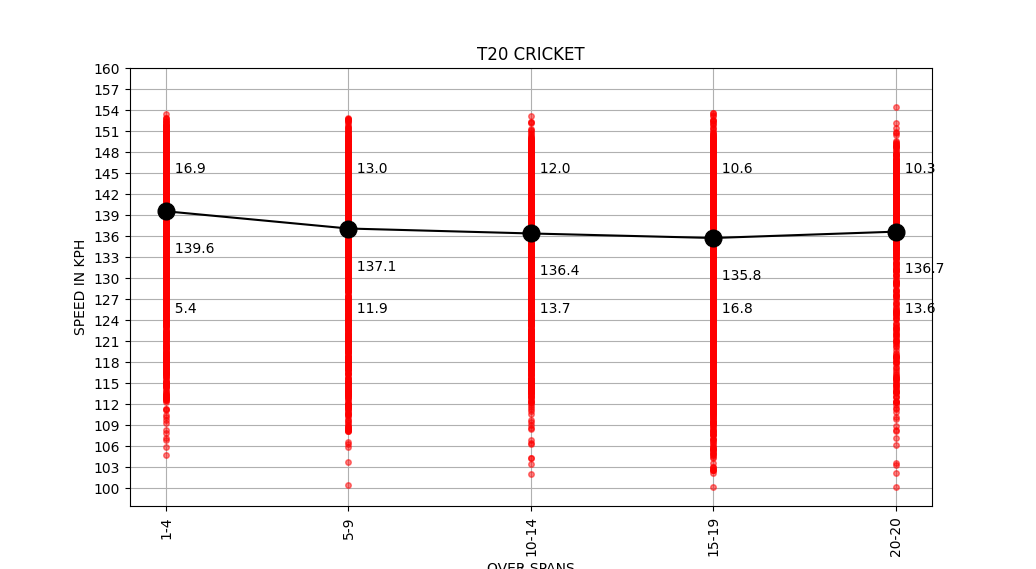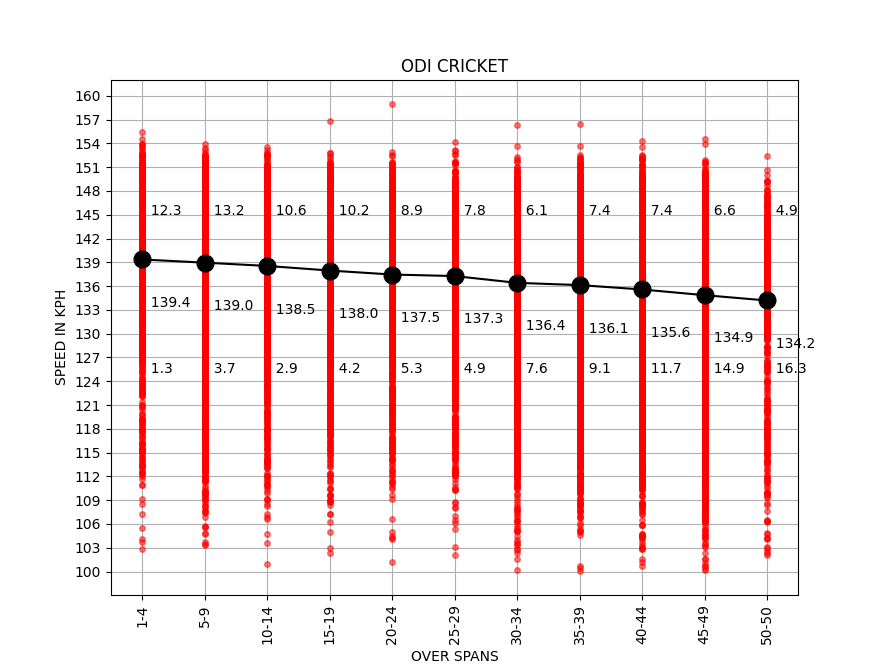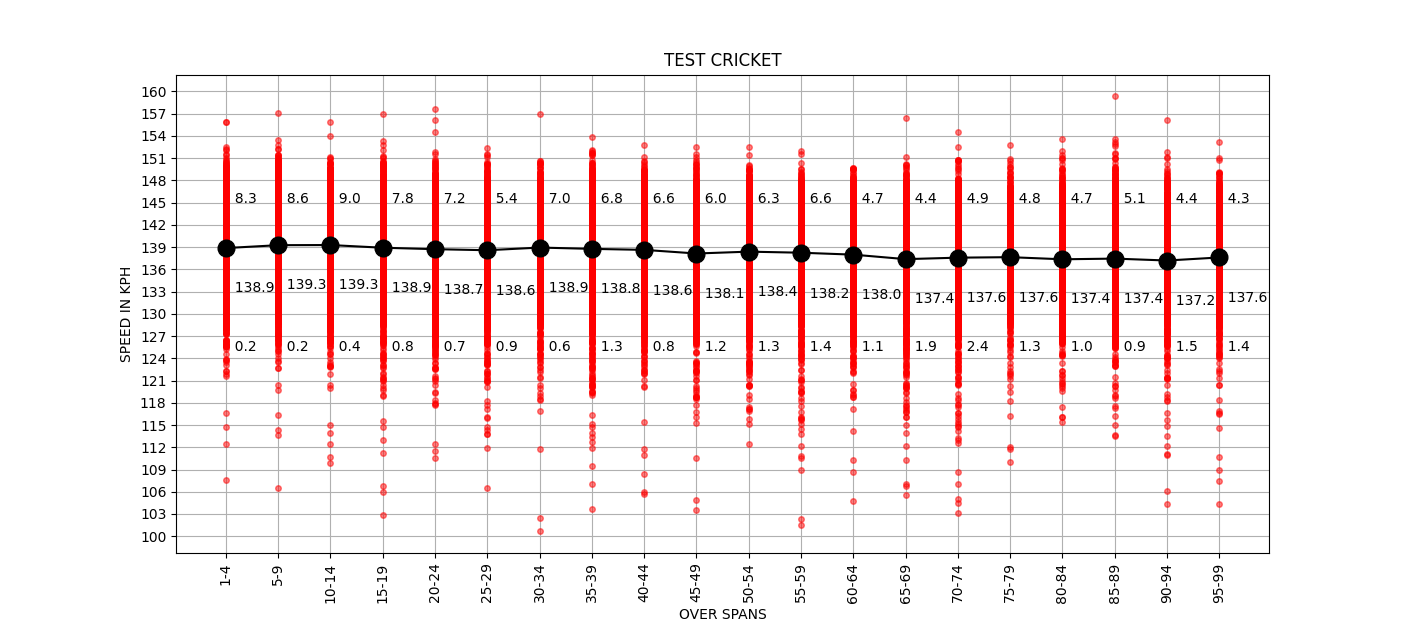Fast Bowling By Format
Fast Bowlers are equally quick in every format. The speed gun shows that in T20, they pursue deception, while in Test cricket, they pursue accuracy.
Speed mania is back. These day it is part of the prevalent chauvinism about the IPL - a T20 league which is no better or worse than any of the other T20 leagues, but is the richest of all T20 leagues. This chauvinism gets fans to bask in the reflected glory of this imagined superiority over other T20 leagues. It also gets fans to bask in the reflected glory of an imagined superiority over Test cricket.
This second kind of resentful gloating has deeper roots. It arises from a strain of fandom which notices one or two speed gun readings and decides that the stupid fast bowler is being lazy and isn’t trying hard enough. Several players have suffered from this abuse - Munaf Patel comes to mind.
As is usually the case, this ludicrous view of the game is a consequence of fairly basic cognitive biases. The ball by ball ball tracking record available for bowlers classed as right-arm-fast includes the speed reading. This gives the speed at release. This record does not support the thesis about fast bowlers being quicker in T20 and slower in Test cricket. Nor does it support the thesis that fast bowlers are lazy in Test cricket.
The record shows a more interesting distinction - between deception and accuracy. In T20, in which scoring rate are very high and batters take a lot of chances, somewhere between a fifth and a quarter of a fast bowlers deliveries in each phase of play are either above 145 kph or below 125 kph. This is a way to deceive the hard swinging bat.
By contrast, in Test cricket, about 1% of deliveries by fast bowlers are below 125 kph. The flat out 145 kph+ deliveries are less frequent too. Though this frequency declines as the number of overs increases. The premium in Test cricket is on accuracy rather than deceptions. Fast bowlers want to hit precise lines and lengths, and hit them as relentlessly as possible. The average speed of the fast bowler drops by about 2 kph over the first 100 overs of a Test innings.
ODI cricket, the half-way house format between Tests and T20, has fast bowlers bowling like its a Test match in the early overs, and like its a T20 match in the last few overs. The share of ‘slower’ balls (below 125 kph) rises from 1.3% in the first five overs of an ODI innings to 15% in the last five.
Charts are given below.






